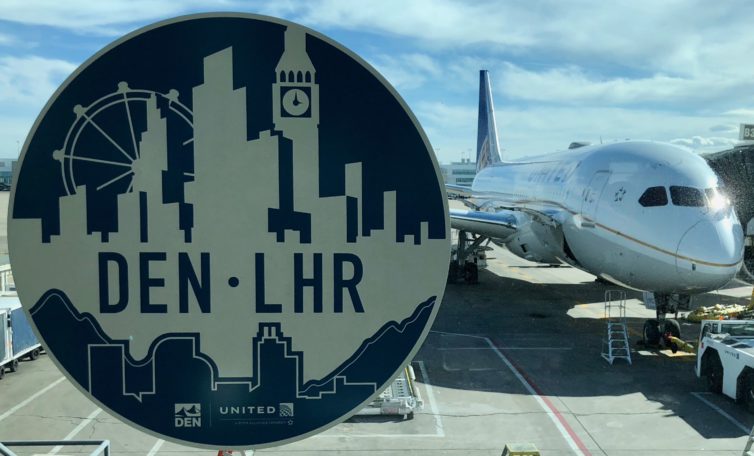
Fun times at the gate for the launch of United’s daily, direct service to London Heathrow (LHR) on a 787-8 Dreamliner. Photo: Kevin P Horn
United Airlines has been aggressively expanding its Denver hub over the last few years. Despite operating 471 flights a day and carrying 42% of traffic, the international routes have been limited to a few flights in Canada, a few south of the border, and the daily Dreamliner to Tokyo. Starting on March 24th, United re-launched, after a hiatus of a few years, seasonal, daily service to London Heathrow on a 787-8 as UA 27 and UA 26.
We were there for the inaugural flight and celebration for this exciting new route. This flight makes for three carriers serving London at once, with Denver’s biggest airline continuing expansion at the airport.
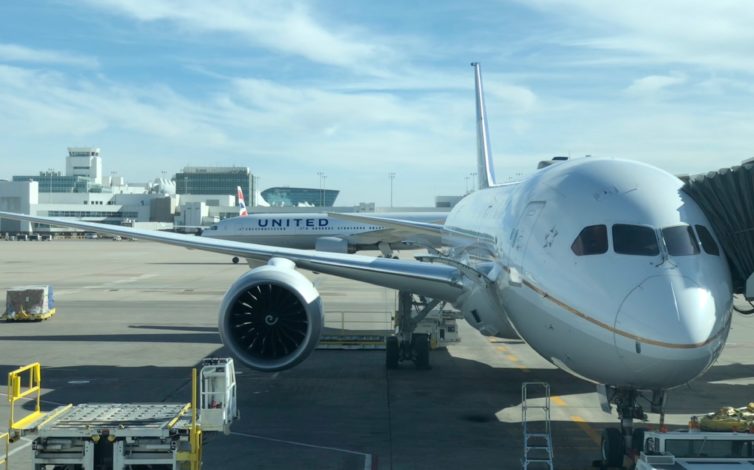
Getting ready for some long-haul flying, a 787-8 is at the gate with a 777-200 domestic in the background.
Domestic aviation in the western United States is a different operation than the population-dense East Coast. With major cities often 1,000 miles apart, often the only way to get between them in less than a day is to fly. Over the years, air traffic to the three largest Mountain West cities – Denver, Phoenix, and Salt Lake City – has increased significantly as the importance of these markets has elevated through sustained and continued growth.
United Airlines has been a dominant force in Denver for many years, with an 80-year history that reaches back into the early years of commercial aviation. It is currently, and by a wide margin, the largest carrier in Denver by passenger enplanements, flights, and revenue.
United’s focus on Denver is no accident; the airport is its most profitable hub, a key part of its route network, and is a focus for continued growth within the airline. As a frequent traveler based in Colorado, I’ve wanted to explore and learn about how United Airlines uses its position in Denver to get people to their destinations, nationwide.
This is the first part of a two-part feature on United Airlines’ operations at Denver International Airport. The second part will cover United’s inaugural 787-8 Dreamliner service to London Heathrow as an example of how United is expanding the reach and prominence of Denver within its network.
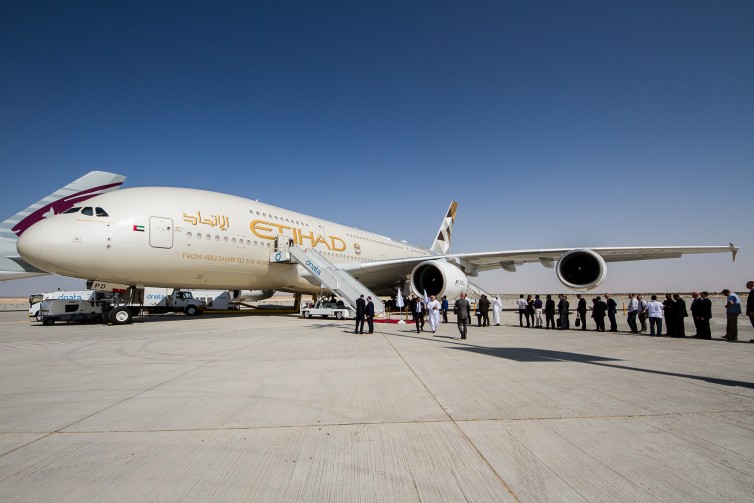
Etihad Airbus A380 in Dubai
It seems like over the last few years, there have been almost weekly announcements of new routes from one of the ME3, the three major middle east airlines (Qatar, Emirates, and Etihad), to the United States. As of now, these three airlines fly, or have announced, routes from the middle east to the thirteen U.S. cities.
As a Denver-based flyer, I have heard a lot of talk about whether we can expect to see some exciting new liveries at Denver International Airport in the near future. I keep finding myself going back and forth between thinking, “yes, we’ll hear an announcement any day now” and “nope, it’s never going to happen.”
Warning: lots of analysis and numbers below. If you want the short version, skip down to the bottom. Otherwise, settle in and let’s look at some numbers.
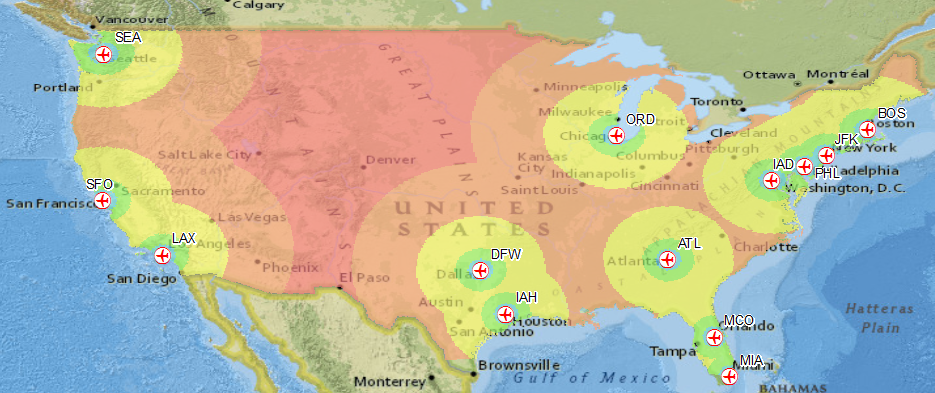
The geographic reach of the ME3 airlines in the U.S. – Image: David Delagarza | AirlineReporter
As an engineer, I decided to do what I do best – start analyzing things and putting some numbers on paper. The first thing I did was chart the geographic reach of the ME3 within the United States. That resulted in the map above. The green areas are within 100 miles of an ME3-serviced airport, the yellow areas are 100-to-250 miles out, orange areas are 250-to-500 miles out, and the red areas are more than 500 miles away from any ME3-serviced airport.
Combining this information with the 2010 U.S. Census data gives us some interesting numbers. Of the U.S. population in the lower 48 states, approximately 44% live within 100 miles of an ME3-serviced airport, 64% live within 200 miles, and 95% live within 500 miles.
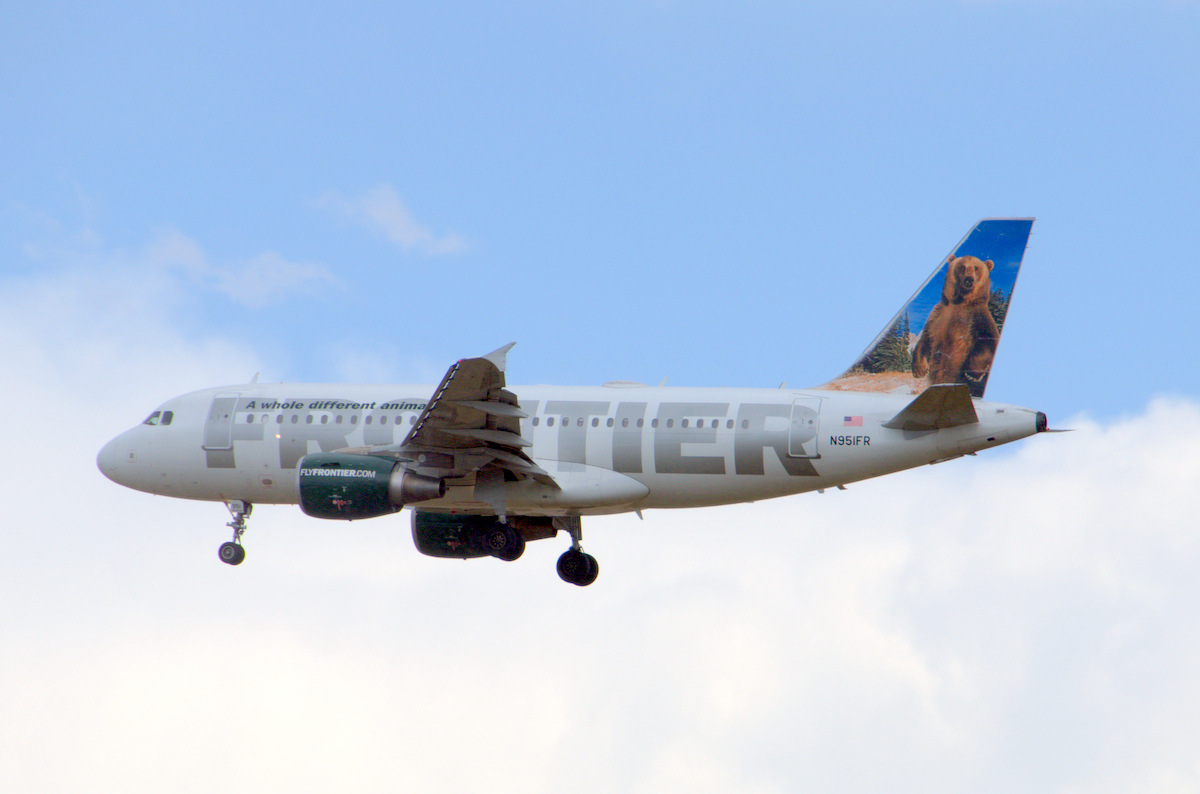
Benny the Bear, an Airbus A319 on approach for Denver International – Photo: JL Johnson | AirlineReporter
It has been a while since we here at AirlineReporter reviewed a mainline Frontier flight, four years to the month, in fact. Since then, Frontier has been freed from Indianapolis-based Republic and has made serious changes to its business model. Denver’s hometown airline and longtime low-cost carrier spent most of 2014 transforming itself into an ultra-low-cost carrier (ULCC). This change was prescribed by the company’s new owners – Indigo Partners. Indigo co-founder William Franke has some experience with ULCCs; in fact he has successfully invested in a number of them, most notably Wall Street’s favorite: Spirit.
I have long wanted to experience Frontier, but the timing and opportunity never worked out. That is until they published a $76 round-trip from Kansas City to Denver. While I wouldn’t necessarily consider myself a “fan” of the ULCC market, domestically they tend to be more interesting than say, the legacies. While I gravitate more to LCCs (like Southwest, Virgin, or JetBlue) it’s fun to check out their ULCC brethren. LCC and ULCC airlines like to suggest that their competitive prices create demand and with a crazy sub $100 fare, I suddenly found a two-day hole right in the middle of my work week.
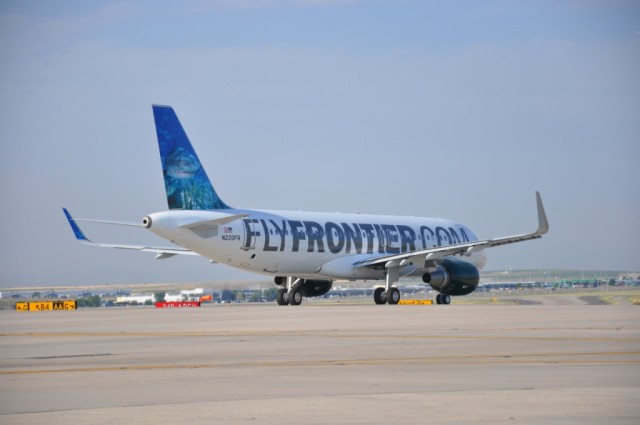
New Frontier Airbus A320 (N220FR) with sharklets – Photo: Frontier Airlines
Republic Airways Holdings has finally offloaded Frontier Airlines to a new owner, and right at the deadline. Earlier this week, Indigo Partners agreed to purchase Frontier and continue the push towards making them an ultra-low-cost carrier (ULCC). Indigo and its head, William Franke, know a thing or two about ULCCs; up until recently they were responsible for Spirit Airlines’ growth to become a leader in the segment.
Frontier’s acquisition by a new owner obviously raises questions about their future, particularly as it relates to their home base of Denver International Airport. Since 2006, when Southwest Airlines started ramping up its presence, Denver has been a three-carrier hub (with United Airlines being the third). Many have doubted the stability and longevity of such an arrangement; as a Denver-based flyer, I can attest to the fact that the three carriers have managed to keep airfares extremely low.





